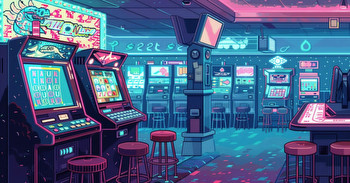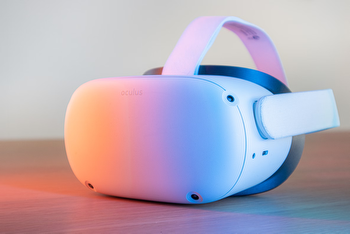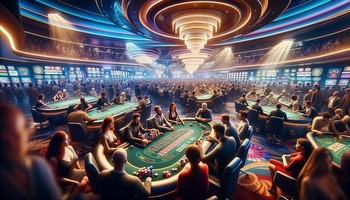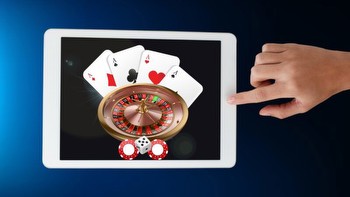Exploring the Evolution of Online Live Casino Technology Through the Years
The gambling industry has changed a lot due to online live casino technology. It offers players an immersive and interactive gaming experience from anywhere, anytime. Therefore, understanding how this technology has changed over time is essential. It helps people see how far it has come and know its future trajectory.
Let’s take a closer look at how online live casino technology has changed. We will discuss its development from the early 2000s to the present. This exploration will help us learn about the important milestones that have shaped its growth.
By examining the advancements, we can learn more about what drives growth in the online gambling industry and what exciting changes could happen soon.
Early 2000s: The Beginning of Online Casino Streaming
In the early 2000s, simple video streaming technology came up. It allowed online casinos to send live video feeds of table games to the computers of the players. However, some initial problems, like slow internet speed and limited data, led to poor video quality and buffering issues.
Despite the challenges, the introduction of basic video streaming technology was a significant step in the development of live casino experiences. That set the stage for future improvements in streaming technology and the realistic online games we enjoy today.
Mid-2000s: Advancements in Streaming Technology
In the mid-2000s, there were substantial improvements in internet speeds. It facilitated smoother and more reliable streaming experiences for online casino players. The proliferation of broadband connections enabled higher bandwidths. This reduced latency and buffering issues.
These improvements paved the way for the development of more sophisticated live casino platforms. Online casinos began investing in advanced streaming technology. It enhanced the overall quality of the gaming experience. This included the integration of better encoding techniques and server infrastructure to support larger player volumes.
Additionally, the mid-2000s saw the introduction of popular table games like blackjack and roulette in live casino formats, featuring improved video quality. Players could now enjoy these games with greater clarity and realism. This further blurs the lines between traditional brick-and-mortar casinos and their online counterparts.
These advancements marked a significant leap forward in the evolution of online live casino technology. They drive increased player engagement and satisfaction.
Interesting Fact:
By the year 2003, approximately 8 million people worldwide were actively engaging in online gambling.
Late 2000s: Social Interaction Takes Centre Stage
Online casinos in the late 2000s integrated live chat functionality. It allowed players to interact with dealers and fellow players in real-time during live games.
This integration significantly enhanced the social aspect of online live casinos. It replicates the camaraderie and social interaction found in traditional brick-and-mortar establishments.
The introduction of live chat had a profound impact on player engagement and experience. This fosters a sense of community and belonging among players. It transformed the solitary experience of online gambling into a more interactive and sociable activity, further driving the popularity of live casino gaming.
In late 2000s online casinos, you can finally tell the dealer they’ve got a great poker face and mean it without getting thrown out.
Early 2010s: Enhancing Immersion with Multiple Camera Angles
The early 2010s witnessed a significant advancement in online live casino technology with the introduction of multiple camera angles. This innovation allowed players to switch between different views of the game. It provided a more dynamic and immersive experience.
Alongside the introduction of multiple camera angles came the implementation of HD streaming technology. This upgrade ensured that players could enjoy crisp, clear visuals, enhancing the overall quality of the gaming experience.
By offering multiple camera angles and HD streaming, online casinos were able to create a more authentic casino atmosphere for players. Whether they preferred a close-up view of the cards or a panoramic shot of the entire table, players could tailor their viewing experience to their preferences. This further blurs the lines between online and land-based casinos.
Mid-2010s: Mobile Optimization for Gaming on the Go
The mid-2010s marked a significant shift towards mobile gaming. There was a huge increase in the number of players choosing to access online casinos from their smartphones and tablets.
Recognizing the importance of this trend, online live casino platforms prioritized mobile optimization to ensure seamless gameplay across a variety of devices. This included optimizing the user interface, streamlining navigation, and enhancing performance on smaller screens.
Mobile optimization increased accessibility and provided players with the convenience of gaming on the go. Whether they were commuting to work or relaxing at home, players could now enjoy their favorite live casino games anytime, anywhere. This further expands the reach and appeal of online gambling.
Late 2010s: Personalized Experiences and Interactive Features
In the late 2010s, online live casinos began incorporating interactive elements into their platforms. It offers players more engaging and immersive experiences. This could include interactive graphics, animations, or bonus rounds that respond to player actions. This enhances the overall gameplay.
Online casinos also introduced customizable features that allowed players to personalize their gaming experience. Players can now choose avatars and backgrounds, select preferred table layouts and game settings, and everything in between. Players had more control over their online casino environment than ever before.
By allowing players to personalize their gaming experience, online live casinos create a more tailored and enjoyable atmosphere. This not only increased player satisfaction but also fostered a sense of ownership and investment in the gaming experience.
2020s: Venturing into Virtual Reality (VR) and Augmented Reality (AR)
As technology continued to advance, online casinos began experimenting with VR and AR technologies in the early 2020s. This involved creating virtual environments where players could interact with digital representations of casino games and environments.
Initial applications of VR and AR in live casino experiences included virtual tables and environments that simulated the atmosphere of a real-life casino, complete with virtual dealers and other players.
The potential for more immersive gameplay and environments with VR and AR technology opened up exciting possibilities for the future of online live casinos. Players could soon find themselves fully immersed in virtual worlds. They will be enjoying a truly lifelike and interactive gaming experience from the comfort of their own homes.
Trends Timeline at a glance
The evolution of online live casino technology has been nothing short of remarkable. Online live casinos have continually pushed the boundaries of innovation, where you can play here any time of the day and week with ease and accessibility. As we reflect on the journey outlined in this timeline, it’s clear that the future holds even more exciting possibilities.
With ongoing advancements in technology and a growing demand for immersive gaming experiences, the world of online live casinos is poised for continued growth and evolution.
Stay updated with all the insights.Navigate news, 1 email day.




































